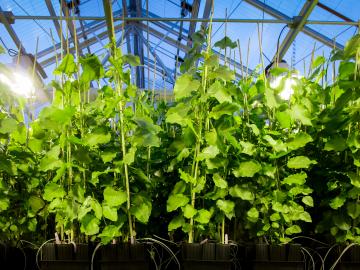Filter News
Area of Research
- (-) Biological Systems (3)
- (-) Fuel Cycle Science and Technology (1)
- Advanced Manufacturing (5)
- Biology and Environment (63)
- Building Technologies (1)
- Clean Energy (104)
- Climate and Environmental Systems (1)
- Computational Engineering (1)
- Computer Science (2)
- Data (1)
- Electricity and Smart Grid (1)
- Energy Sciences (1)
- Fossil Energy (1)
- Fusion and Fission (19)
- Fusion Energy (3)
- Isotope Development and Production (2)
- Isotopes (15)
- Materials (97)
- Materials Characterization (2)
- Materials Under Extremes (1)
- National Security (26)
- Neutron Science (49)
- Nuclear Science and Technology (8)
- Sensors and Controls (1)
- Supercomputing (90)
- Transportation Systems (1)
News Topics
Media Contacts

For years, Duane Starr led workshops at ORNL to help others from across the U.S. government understand uranium processing technologies. After his retirement, Starr donated a 5-foot-tall working model, built in his garage, that demonstrates vibration harmonics, consistent with operation of a super critical gas centrifuge rotor, a valuable resource to ongoing ORNL-led workshops.

Oak Ridge National Laboratory scientists identified a gene “hotspot” in the poplar tree that triggers dramatically increased root growth. The discovery supports development of better bioenergy crops and other plants that can thrive in difficult conditions while storing more carbon belowground.

Brian Davison, a researcher at the Department of Energy's Oak Ridge National Laboratory, has been awarded a 2017 fellowship by the Society for Industrial Microbiology and Biotechnology (SIMB).

Researchers at the Department of Energy’s Oak Ridge National Laboratory (ORNL) have released the largest-ever single nucleotide polymorphism (SNP) dataset of genetic variations in poplar trees, information useful to plant scientists




